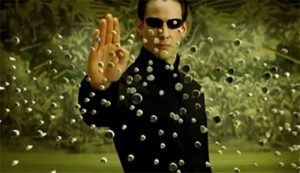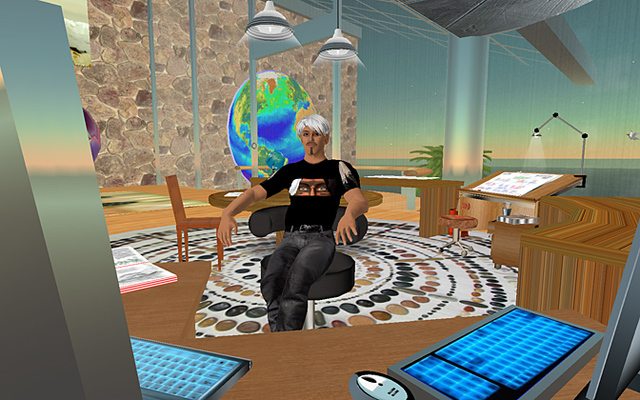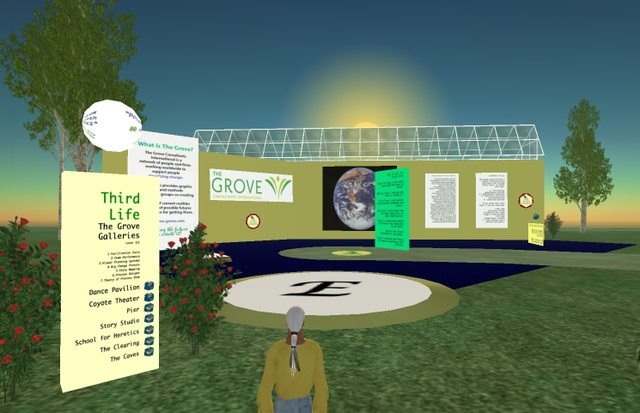THINKING ABOUT SURVIVAL—Step-by-Step
We humans are cooking ourselves. It was 108 degrees Fahrenheit in Paris and Germany in early August—the first temperatures over 100 degrees F. in the UK, ever—July was the hottest month globally in recorded history. If the equatorial countries become unlivable people will head north. They already are. If the ice melts whole economies in the north will rupture. A new cold war is already shaping up over the Arctic. Our government is in denial. It’s a mess. Can we survive?
PERSONAL CONTEXT
I’ve been absorbing news and reacting to all the climate developments for a while now, working to stay awake and not numbing out. This blog is a reflection of that journey starting with the dark thoughts and then what I’m doing about it. It’s a longer piece, writing to evoke the actual feelings I’m having.
THE MATRIX
I, like a large number of other people, have been hooked up to a matrix of disinformation and catastrophe news that feels like the intellectual parallel to junk food. I’m  inferring, from my own reaction, that this is become a kind of mass social paralysis. It actually is a Matrix, like in the classic and scarily prophetic trilogy by the Wachowski brothers. In that movie a machine society figured out that humans were the greatest source of energy available and created a hypnotically seductive virtual world to conceal that fact that embryos and fully grown humans were hooked up like batteries in vast arrays of incubator-like cells.
inferring, from my own reaction, that this is become a kind of mass social paralysis. It actually is a Matrix, like in the classic and scarily prophetic trilogy by the Wachowski brothers. In that movie a machine society figured out that humans were the greatest source of energy available and created a hypnotically seductive virtual world to conceal that fact that embryos and fully grown humans were hooked up like batteries in vast arrays of incubator-like cells.
Today we aren’t living in incubators with physical hookups to the back our necks, but we we are plugged into a matrix of screen imagery whose sole purpose is to keep us looking so that companies can mine our data—feeding us climate catastrophies and mass shootings is its sauce. As anyone who reads now knows, the news, ads, and suggestion feeds are carefully managed by algorithms and AI scrapings of all your data to know what keeps you looking. It turns out that extreme, disrupting news works predictablty well. So does disgusting, unbelievable conjurings of possibility in the form of conspiracy theories, racist attacks, and reports that will shatter any sense you have of being safe and having a good day. (If you don’t get this watch The Great Hack, a documentary about Cambridge Analytica).
THE MIASMA
In his recent book, FALL: Or Dodge in Hell, Neil Stevenson calls this mashup of disinformation and social media the “miasma,” which means stink. It’s a near future where anything that has any kind of attention gets amplified, distorted, and misreported in a tornado of excitement and media frenzy. The weathy employ AI filters and read assistants to stand in between. We’re almost there.
My perception that this really does stink became belief when I read that Jeff Zucker, the head of CNN at the time Trump was elected, was the person who made his name at NBC with the gross out show, Fear Factor, and went on to hire Trump in the Apprentice. CNN’s coverage of Trump during the campaign was 1/3 more than any other network. Is it a surprise that CNN’s business model turned a corner and they have been making money hand over fist since—by attacking, making fun of, and pretending to be doing reporting? I like Colbert, but he’s part of it. MSNBC is part of it. FOX news is way into being a part of it. It’s rope-a-dope by people who intimately understand professional wrestling, AND by the tech companies who are creating the infrastructures that allow social media to support our Presidency and what is turning out to be a global reality TV show.
All this is probably not news. But for me, knowing this is troubling because I can’t pretend that I can go on not doing anything about it. I’ve spent my adult life helping the tech companies get better at what they do. I’ve relied on and use their tools. I rely on and use their networks. I am IN the Matrix. And if you don’t run into trouble, it’s a wonderful illusion. The daily “upset” works like caffeine. Jack in. Jack up. Then, as many do, jack knife. Right into the health system that also prospers from all the side effects. I don’t want that. So I’m turning in other direction.
STAYING CONNECTED TO MY OWN HISTORY
Many times this means doing down in the San Francisco, the city I lived in since 1969 before moving to Petaluma. I live there now because I fell in love with and married Gisela, after my Susan died of cancer in 2013. Seredepitously I was born in Petaluma, but was only there for four years before moving to the East side of the Sierras in Bishop.
 Susan and I were married for 46 years. We had two kids together and raised another and reconnected with yet another, for a total of seven grandchildren I care about. We lived most of those years in San Francisco in flats, the kind of dwellings that crust the city hills, allowing two or three families or groups to occupy the whole “flat” level they are on. They are different than apartments where other units can be on the same floor. It had a real community feeling most of the time. It still does, and gets stronger when I visit.
Susan and I were married for 46 years. We had two kids together and raised another and reconnected with yet another, for a total of seven grandchildren I care about. We lived most of those years in San Francisco in flats, the kind of dwellings that crust the city hills, allowing two or three families or groups to occupy the whole “flat” level they are on. They are different than apartments where other units can be on the same floor. It had a real community feeling most of the time. It still does, and gets stronger when I visit.
Our flat in the Richmond District is a half block from Golden Gate park and next to the Argonne Community Garden, where I was President for 7-8 years after Susan got me involved back in 1978. Our back yard, sand like all the other homes built out on the west side of San Francisco, which used to be considered beach front, supports a half dozen well composted flower beds, hand bricked by myself over the years. We used to have a lawn in a circle in the middle of a Medicine Wheel, in honor of the people who lived in this country before the Europeans. Miwoks and the Ohlone didn’t have wheels like this exactly, but the plains people did, and so did the Aztecs before the Spaniards. Teachings have flowed down and I happen to find their respect for the natural world and the many facets of human life inspiring. Mowing the lawn in the middle of the wheel also kept me connected with the hours I spent mowing the lawns around the church in Bishop, CA, where my father was a minister. The mowing was always conjunct with important church socials, Sunday services, and other ceremonies. I guess the young part of me trying to make sense of things got that doing a good job on the grass was a sacred act.
But then the long drought in California in the early 2000s convinced me it was more sacred to stop watering grass, and the circle devolved back to sand. But I put in a little fire circle in the middle and a mandala of bricks. It was still a sacred circle.
Farther back in the yard is another circle between a plum tree we planted and a moon shaped raised bed made of Sierra rock we hauled back on several trips. It is host to the rhodidendron and a Mexican orange bush, and a ring of flowers when Susan was alive and planting. This brick circle was made of old bricks from earlier tenants at this place, who were reputedly architects. When we managed to buy the place in 2001 it became a place to have lunch under the plum, and the then flourishing cianothis tree, a native lilac that blooms blue several times a year and is considered a weed tree in some parts of northern California. But it was at the tip of moon garden, the East direction on the wheel, and was the center of the garden. It represented indigenous California to me.
GARDENING AS A HEALING RESPONSE
Susan’s four-year cancer journey and passing away were devastating, and transformative. Now that Susan is not here in the flesh, she is alive for me in this garden and the flats, which I keep ahold of and now rent. And my connection with subtle realms is much more alive. My old studio is now a small city apartment for writing, creating, and remembering. The garden’s drip system still works, fortunately. But ivy and switch grass take over steadily. A huge limb of the plumb came down last year. The cianothis has also fallen prey to strong winds. Only one, slightly rotting core remains. It’s decline and decay mirrors my larger sense of what is happening. But I can do something directly about the garden.
I began clearing and weeding a couple of weeks ago, and this recent visit wanted to finish up. I packed all the trimmings I’d left in the circle to dry last time into a green bin. I trimmed and weeded a bit from the front beds. And I was determined to take the brick circles back to their bricky selves. They now were covered with little six inch high weeds coming out of the spaces between, like course dog hairs all over the circle. The only way to weed was to get on my knees with my knee protectors, and pick  them out one by one. I knew from my years of gardening I was in a for an hour or so of this, so I relaxed and began letting them talk to me. I sometimes get real messages this way
them out one by one. I knew from my years of gardening I was in a for an hour or so of this, so I relaxed and began letting them talk to me. I sometimes get real messages this way
That is where it began to hit me, that the way out of the miasma and matrix of our times is to simply stop, and beginning paying attention step-by-step to moving in a direction that has a future. As I slowed, I opened up.
TALKING TO THE WEEDS
I wondered if the weeds felt me pulling them up. I wondered if some people in authority think of certain kinds of people as weeds that need pulling up. What right did I have to even think of people as being like weeds? But weeds are alive, and they propagate. The only reason they are called weeds is because I’ve decided that this or that kind of plant isn’t wanted. Isn’t wanted is the definition of a weed.
Hmmm. But my weeding is actually an act of worship in a way. I’m creating sacred space. I’m embodying my love of Susan and our family. I’m creating this as an open space, free of the distraction of weeds.
And it is in open space, with lots of spaciousness and being fully present that new life comes in. I reflected on how cracked open I’ve been by Susan’s dying, and how into the cracks came new love and new intention, and new courage, and a lot less concern for many of the previous things that annoyed me. I reflected on how having a cleaned-up wheel in the back yard brings more potency and energy to my drumming the circle and praying to my ancestors and teachers. It gives me more courage for my community work.
Maybe the weeds I need to pay attention to are the weedy thoughts and feelings that are growing in response to the miasma! Oh my. Now I didn’t want to have that thought. How can I weed myself?
STEP-BY-STEP
Step-by-step I thought again, just like pulling these little suckers. What would those steps be I wondered? And then the steps I want to take came through.
- Stay “woke:” This is a Black term for staying conscious and caring about social issues, like the repression of people of color. I like it as a term for getting “woke” all around— to technology. media and it’s pricetag, and to global warming.
- Unplug: Literally unplug the Matrix. We did that a bit a couple of months ago and put our TV in the garage. We haven’t cancelled cable but are close. Watching movies isn’t the same as watching the “news.” It has already changed our energy. We read more. We talk more. We sit more. I garden more.
- Focus on what has heart and meaning: This means doing what feels right and what I actually have a relationship with, like weeding the backyard of the flats, like getting involved with Friends of the Petaluma River and California Poets in the Schools, like talking on GLEN Exchanges to our global colleagues.
- Build sustainable infrastructure: Something tells me that real relationships matter more than digital ones. Cells and Zoom and other devices can support these real relationships. Knowing neighbors is good. Knowing evacuation routes from wildfires is important. Knowing about water and food. Maybe having a garden that actually produces would be good. And practicing mindfulness to retrain my nervous system to stay responsive and not reactive.
- Listen for what is moving in a hopeful way: I believe that more people must be waking up to the Matrix and unplugging from it. Already there are people co-creating what will be the future. Their signals sometimes seem faint. Listen. The music is playing. Hum along. Look for the dialogue circles.
- Prepare for adaptability: a neighbor shared a new term recently—“prehabilitation.” It refers to getting ready for surgery before the surgery. In scenario planning we call it developing “preceptivity,” which is receptivity in advance of needing it. I’m writing this blog at a renewing Harbin Hot Spring, a beautiful retreat center near Calistoga, CA, wiped out by a wildfire in 2015. The community that built and supports this place was ready. They left. No-one died. No-one was trapped. And they are re-creating. It’s a new Harbin, but has a lot of the old feeling of being a real sanctuary.
- Share my truth: Instead of retelling stories from the Matrix, I am more resolved that ever about sharing my own experience and learning. The way I want to survive is by living fully, and to live in the actual here and now, and not some mirage. This is what I believe will inspire my grandchildren to do the same. It is what they will need to survive.
So I think about the heat and technology. Living out these steps is what I’m doing. Check into how reading this piece resonated with you inside. Did you sense the shift from the first part to the second? Could you feel real life coming back in. I did just writing this.




